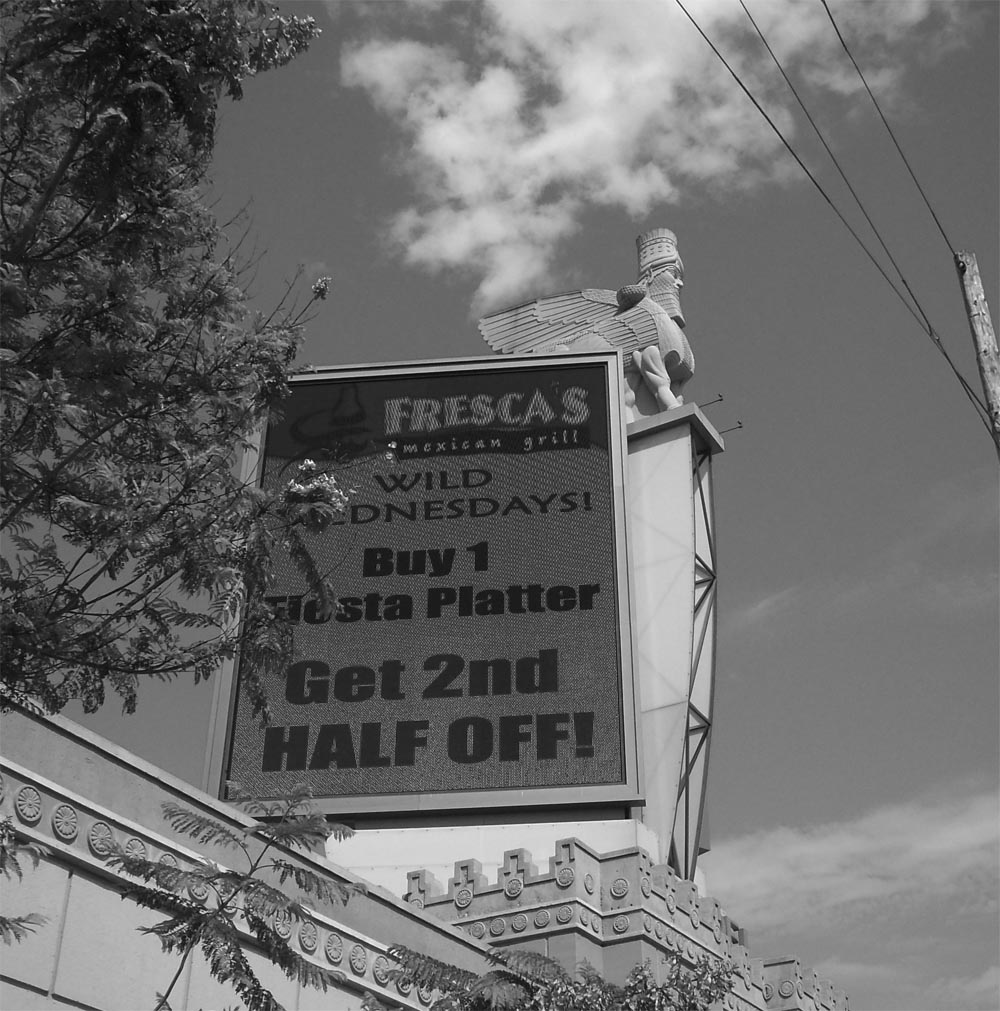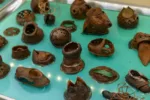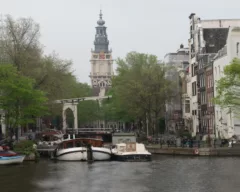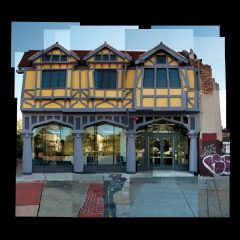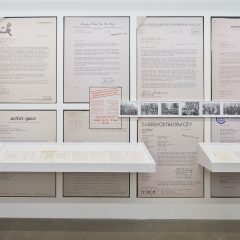Los Angeles.
You have to wonder when the United States is going to kick its cultural amnesia and get on with some real, workable, world-historical consciousness; when it’ll finally enter History rather than just history. My guess is in a century or two, when we’ve joined the underdogs and the past seems prettier and not so conveniently forgotten. But History is not so much forgotten here as it is repressed and replaced; forced so far down that it pops up with the weirdest, WTF symptomology.
To give you an idea of what I mean, just look along the side of interstate 5-South, in Los Angeles. There you’ll find a series of figures jutting into the sky above the freeway: enormous wingèd bulls with bearded human heads advertising discount shoes. The historically-inclined will tell you that these guys are, in fact, replicas from the palace of the ancient Assyrian emperor, Sargon II. That same individual might also be astute enough to tell you that the whole place— the Citadel Outlets Mall— is itself a replica of Sargon’s fortress, Dur Sharrukin. It’s got the works: the crenellation, the wingèd bull guardians or Lamassu, the stone panels depicting a band of kooky Assyrians on the war path. All in all, a pretty strange branding sensibility.
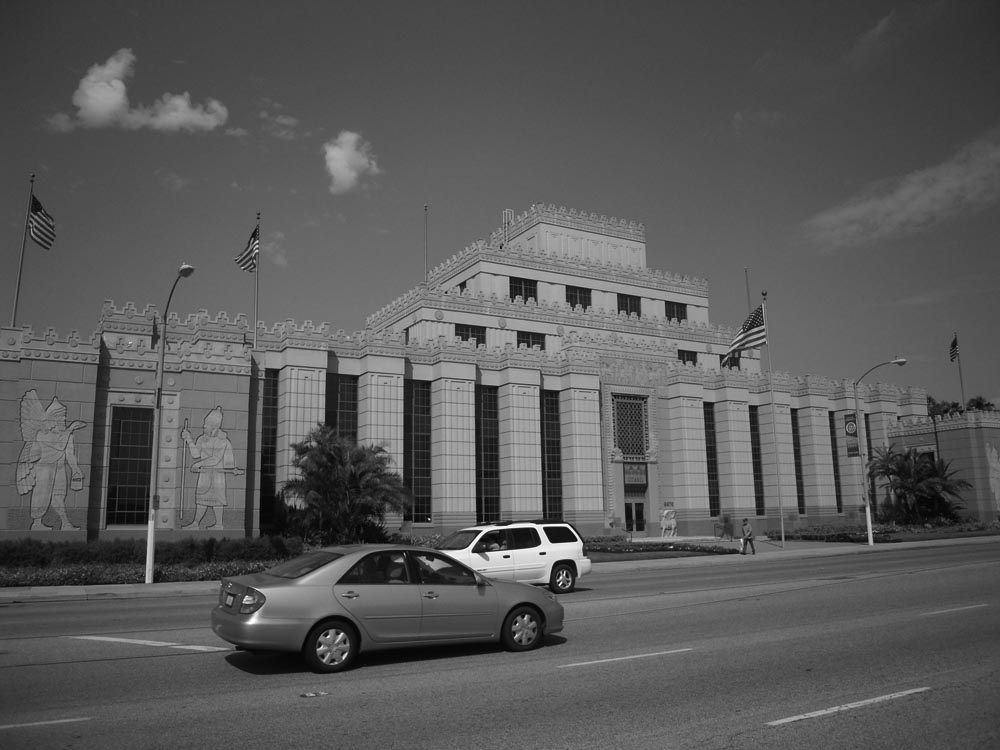
Assyrians were one of the most hated of all empires; reviled throughout Mesopotamia for their incredible bloodthirst, sadism, and early perfection of war. Having an Assyrian-themed outlet mall is a bit like having a Nazi-themed farmer’s market. This analogy holds especially well when you consider that it was the Assyrian emperor, Sennacherib, that destroyed Jerusalem and managed to “lose” ten tribes of Israel in the process. We in the States are, of course, are strongly jaundiced owing to the Biblical tradition, and a little further scholarship reveals Assyrians to have tended the light of civilization, in the nobler sense of the word, for centuries. They had art and architecture, astronomy and mathematics, libraries and great centers of learning. But because of public relations efforts, on the part of themselves and others, Assyria has come to be popularly synonymous with the celebration of violence and the flaying of the vanquished… Which brings me to my original question: why Assyria? Where did that come from?
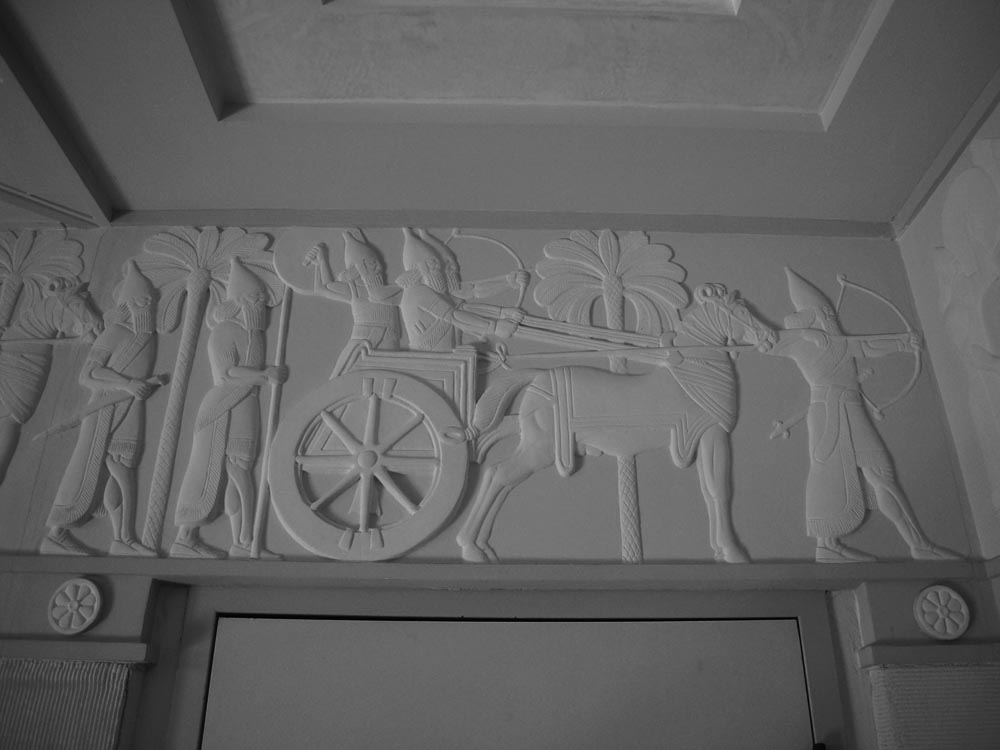
Here’s the short answer: the Citadel Outlets were originally the Samson Tire and Rubber Company. It broke ground in 1929 and lifted the Sargon aesthetic because the owner, Adolph Schleicher, wanted a vaguely “Samson and Delilah motif,” as the website explains. So, there you go: it was a flip of the coin. A subconscious slip in the titles.
That whole era of Los Angeles, it seems, was obsessed with antiquity, as a decorating motif. There’s Grauman’s Egyptian theatre, built in 1922, just before the discovery of Tutankamon. On Sunset Boulevard, for years, you had the hulking and decaying Babylonian set from the D.W. Griffith flick, Intolerance. Some reproduced parts from that set— huge elephants balancing on 6-story pillars— today lord over an outdoor mall in the middle of Hollywood. However, this cheesier kind of revivalism, love it though I may, is a very different experience than replica.
For me, there is something haunting in the specificity of the Citadel Outlets. Here I am, in an township of Los Angeles called Commerce, in the dust and hazy heat, a little dizzy from soda overload, and I look up to see Sargon the Second, speaking again after nearly three millenia. Granted, this time around, he’s selling women’s jeans and surfboards, but if you squint, you can just barely imagine yourself in Mesopotamia at the dawning of the Prophetic Age. You’re at least partially transported. However crass its purpose or origin, replica can always serve as Monument and Memory, even in a town as tabula rasa as Los Angeles, California. You just have to get yourself in the proper mood.
I’ll give another example. In the world capital of crass, Las Vegas, Nevada, on the strip, is a casino called Paris Las Vegas. For its exterior, the casino basically spliced together some of France’s most postcarded architectural landmarks— the Louvre, the Opera House, the Eiffel Tower, and L’Arc de Triomphe— and called it a wrap. I assumed that those little pieces of France would only hold up from a distance; that the viewer would approach the Arc De Triomphe only to see the dinner menu flashing on the inside. But no. Come closer and you’ll notice that the Las Vegas version, standing two-thirds the size, has all the same inscriptions as the original… All the same generals and battles from the Napoleonic Wars. An exact replica. Friends have pointed out to me that, in some ways, replica is a pretty unimaginative form of design. But as far as unimaginative things go, you have to admit, it’s one of the more edifying.
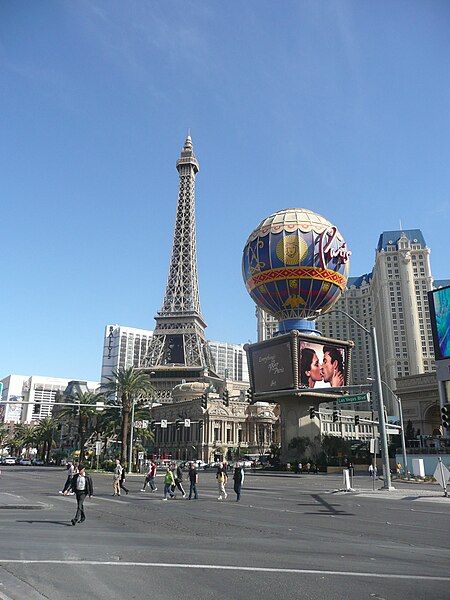
After expressing my enthusiasm for the Citadel and Paris Las Vegas, natives also kept mentioning this other place, Forest Lawn Cemetery, final resting place for such American god-kings as Michael Jackson and Walt Disney. Aside from its famous dead, though, Forest Lawn also boasts a large collection of Michelangelo replicas, housed in a large mausoleum. La Pietà. Day and Night. Moses. His David adorns one of the driveways. But the real treat, the brochure tells us, is the stain-glass reproduction of Da Vinci’s Last Supper. It has an automated unveiling, every hour or so. A recorded narration sets up the backstory before the curtains open to an over-radiant burst of choral music.

But still…. I walked over to La Pietà and— have to admit— I was struck. Both with the original form and the second-order experience of replication. That here, in Glendale, California, I could warm my hands on some real, auratic glow from the Italian Renaissance. I compare that to a recent trip to the Pergamonmuseum in Berlin, where I walked through actual ruins, got within spitting distance of real Assyrian sculptures, and just couldn’t get into it. Maybe it was too much pressure, or too concentrated. Who knows. I supposed I wasn’t in the right mood. Back at that mausoleum in Glendale, however, I was really bridging Time and Space. And it makes sense. Mausoleums and museums should blur at the edges, or even perform the same function. They are both where the Living go to commune with the Dead.
How wonderful would it be if cemeteries could really speak? If every grave could tell the story of its owner… Literally. I’m picturing every gravestone with a pair of headphones, through which visitors could listen to the life and times of the deceased— in their own crackling voices when possible. Every stroll through the cemetery would be a reinforcement of the human continuum. Maybe, graveyards could one day have archives at their center, rather than churches.
Previous periods had better excuses for History-loss. Isolation. Failures in technology. Pillage and plunder. Records warped by imperial or Catholic revisionists. Not us. We have the means. And however weird and crass and unimaginative our reminders might be, at least they carry on the didactic duties of human memory— provided people bother to glance at the plaques or google the stuff when they get home. Besides, in the gaping absence of real antiquities, we need something to get the ball rolling.


